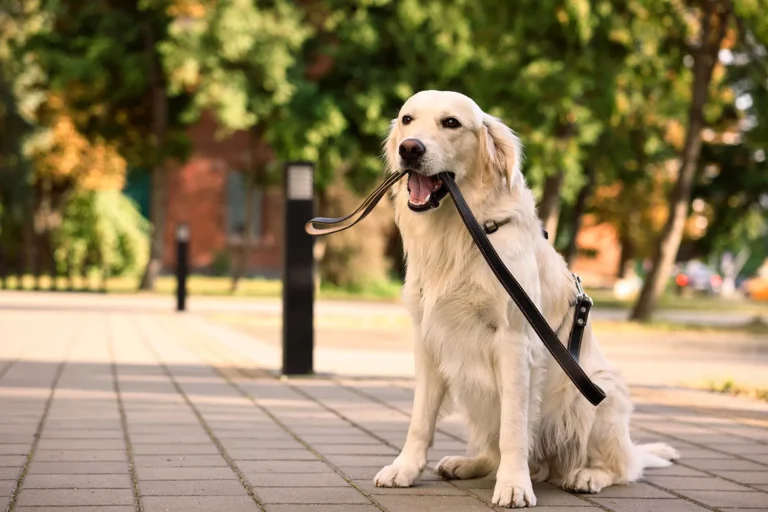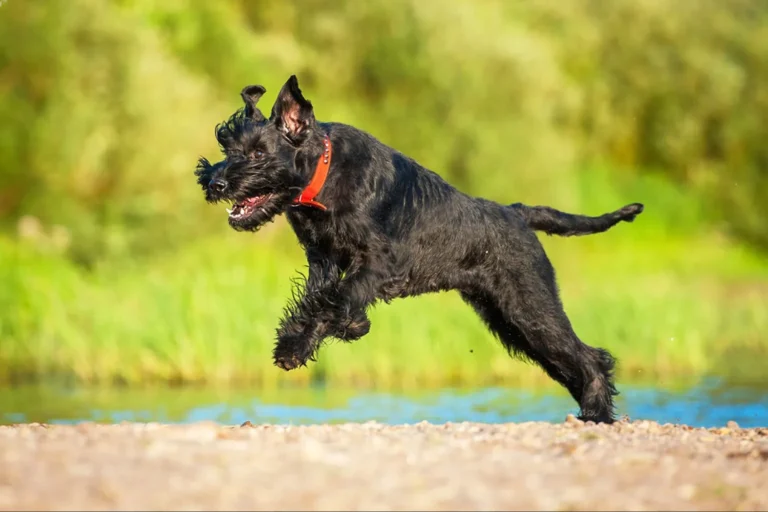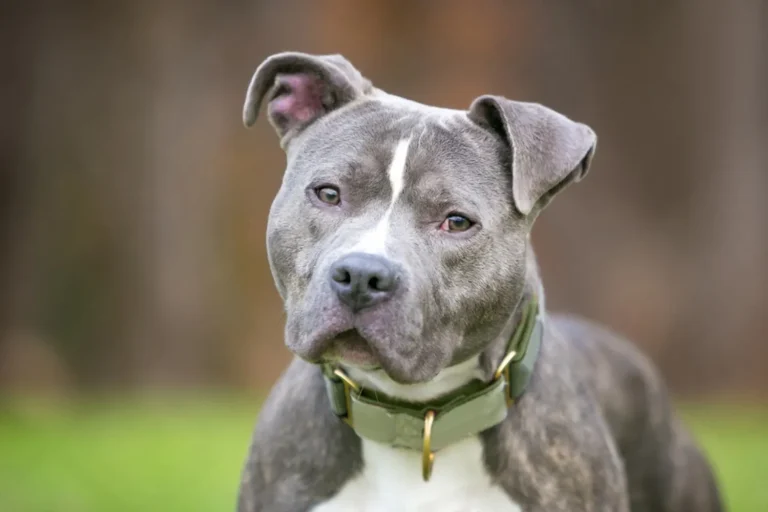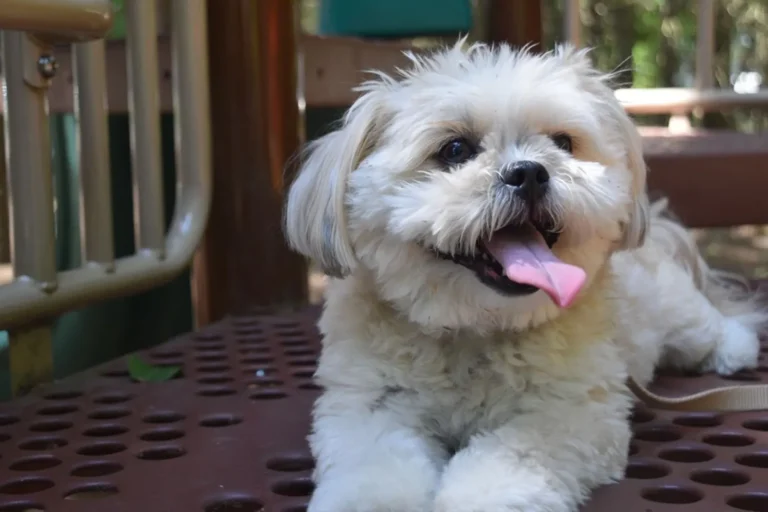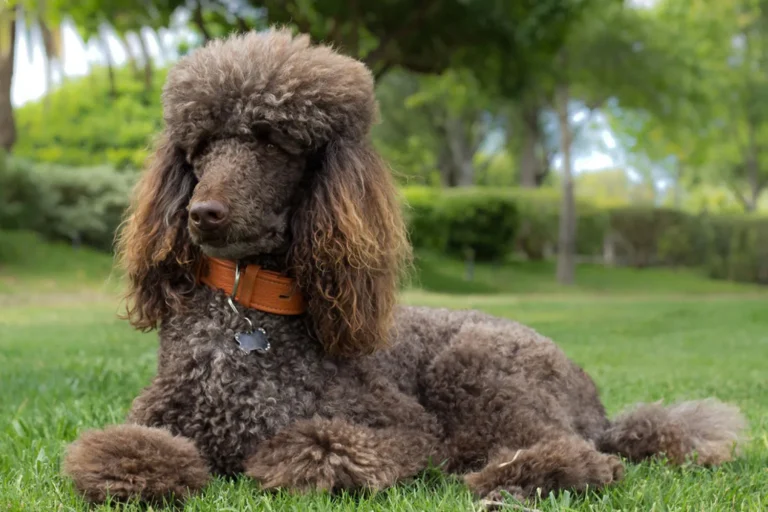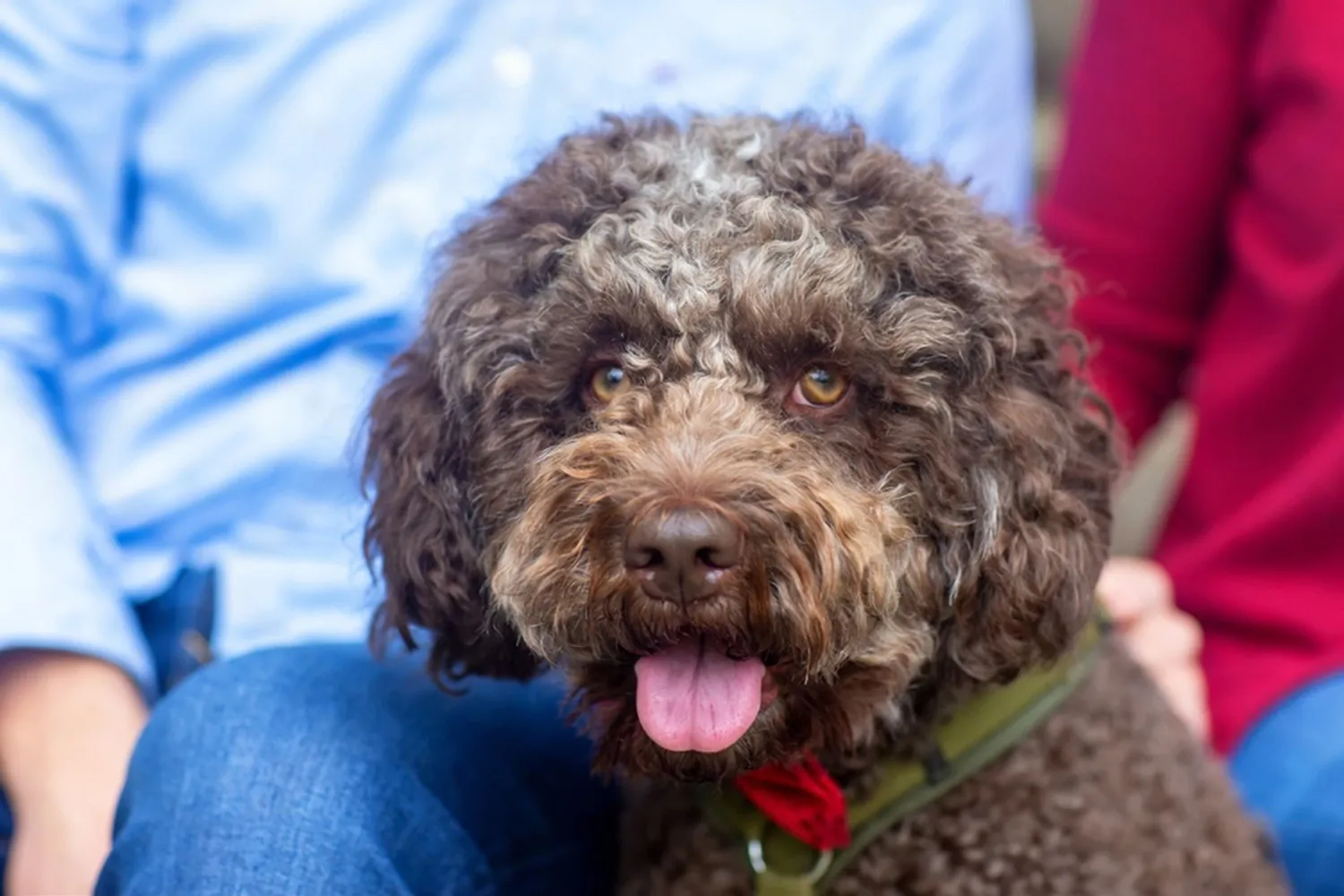
Australia might be one of the big four truffle producers right after Italy, Spain, and France but you won’t find true wild truffles growing Down Under. Here, the treasures are cultivated on farms, tucked beneath carefully inoculated oak and hazelnut trees. I once followed a Lagotto Romagnolo through a frosty Tasmanian grove; he froze, flicked a paw, and the farmer grinned there it was, the faint perfume of a perfectly ripe truffle.
If your dog lives by their nose, truffle scent games are brilliant enrichment at home. And if you ever visit a truffière, keep your pup leashed, reward with treats (not fungi), and let the pros handle any digging to protect the crop. Winter is the season here, which is why Australia shines when the northern hemisphere is between harvests.
What Is the History and Origin of the Lagotto Romagnolo?
Picture the reed lined marshes of northern Italy, boats gliding through shallow water, and a sturdy, curly coated dog hopping in and out without a second thought. That’s where the Lagotto Romagnolo got its start. Known as the Romagna Water Dog, this ancient Italian breed worked alongside villagers and hunters in the countryside around Comacchio and Ravenna more than 600 years ago. The name itself basically means “lake dog of Romagna,” which tells you everything about its original job: a tireless water retriever with a weatherproof coat and a big heart for hard work.
The Lagotto’s grit shows up even in old literature. In 1591, the poet Erasmo Di Valvasone wrote of a “rough and curly haired” dog that didn’t fear sun, ice, or water, boldly crossing rivers and scrambling over rocky slopes. I love that image it’s exactly the kind of plucky determination you still see in the breed today. I remember meeting a Lagotto at a farmer’s market in Bologna; even in a bustling crowd, that dog moved like it had a mission, nose twitching, eyes bright.
As the centuries passed, the marshes were drained to make farmland, and the Lagotto adapted brilliantly. No more ducks to fetch? Fine time to master the art of truffle hunting. They became the world’s first breed developed specifically for that job, using their exceptional noses to find hidden treasures beneath the soil. I once watched a Lagotto work a small orchard quiet, methodical, and suddenly, a precise little scratch: truffle located. It was like watching a craftsman at work.
Today, the Lagotto Romagnolo is recognized by the American Kennel Club as a Sporting breed (since 2015). They’ve gone from a well kept Italian secret to beloved companions around the world. If you bring one home, give that nose a job scent games, hide and seek with treats, even beginner nose work classes. A Lagotto with a mission is a very happy dog.
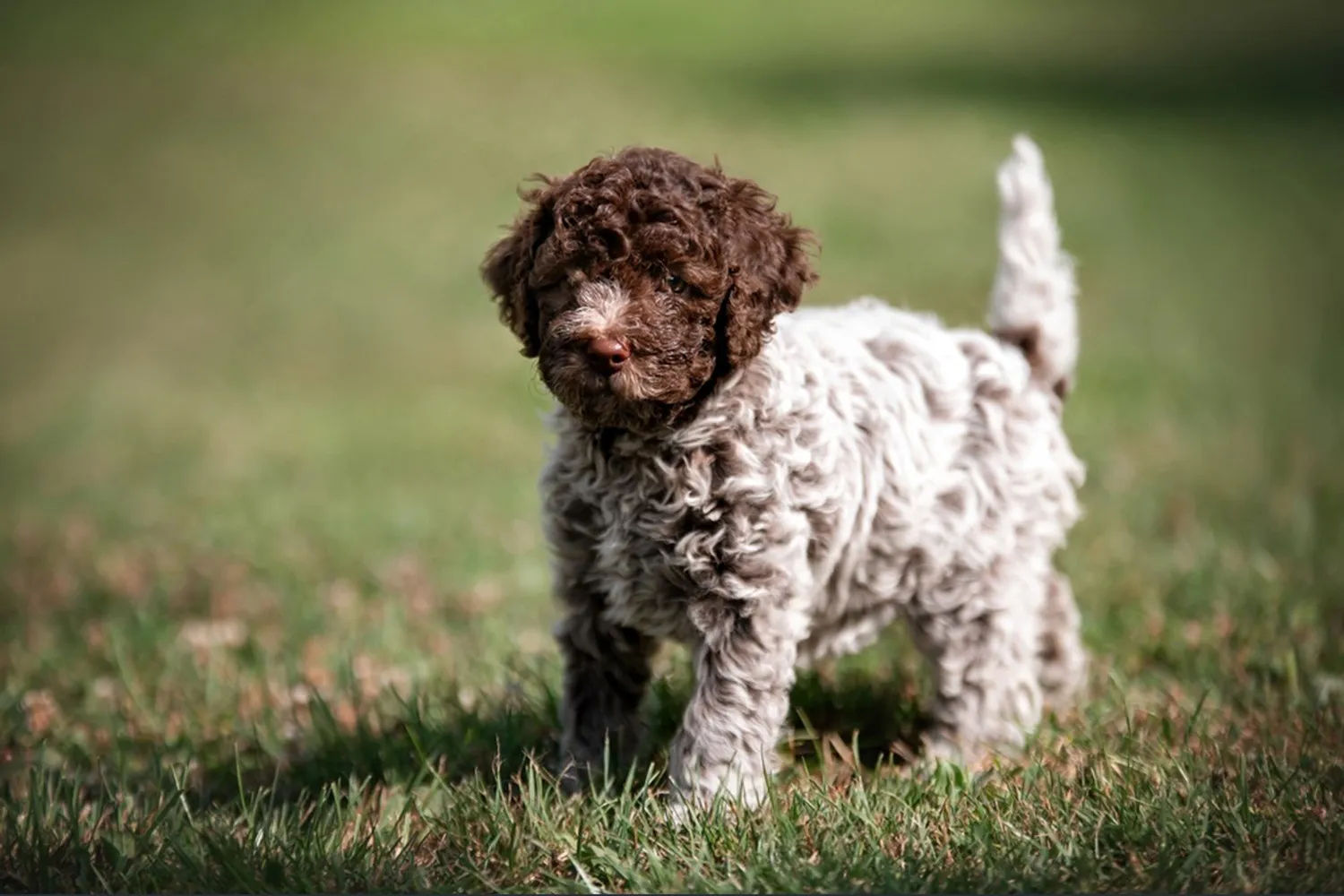
What Is the Lagotto Romagnolo?
Often called the truffle dog, this small to medium Italian water dog started out as a retriever and flushing breed and later became famous for its nose. Picture tight, woolly curls, bright eyes, and a “ready for work” bounce. People compare the Lagotto to the Poodle for good reason both are curly, clever, highly trainable, and share the French Barbet in their family tree.
What I love most is how their brains never seem to switch off. Give a Lagotto a job and they light up. I once watched one in a scent class find a hidden cotton swab in seconds, then trot back like, “What’s next?” If you bring one home, plan on fun nose games hide treats around the house, scatter kibble in the yard, or try beginner scent work. They’re water lovers too; my friend’s Lagotto will splash in any puddle like it’s a personal spa day.
Daily exercise matters, but mental workouts are just as important. A Lagotto with a “dig box” in the backyard is a happier Lagotto truffle instincts run deep. Their coat is low shedding but needs regular brushing to prevent mats, plus tidy trims to keep those curls manageable. After swims, a quick ear check helps keep things healthy. Train with patience and positivity and you’ll have an affectionate, eager partner who’s as game for adventure as they are for a cozy evening on the couch.
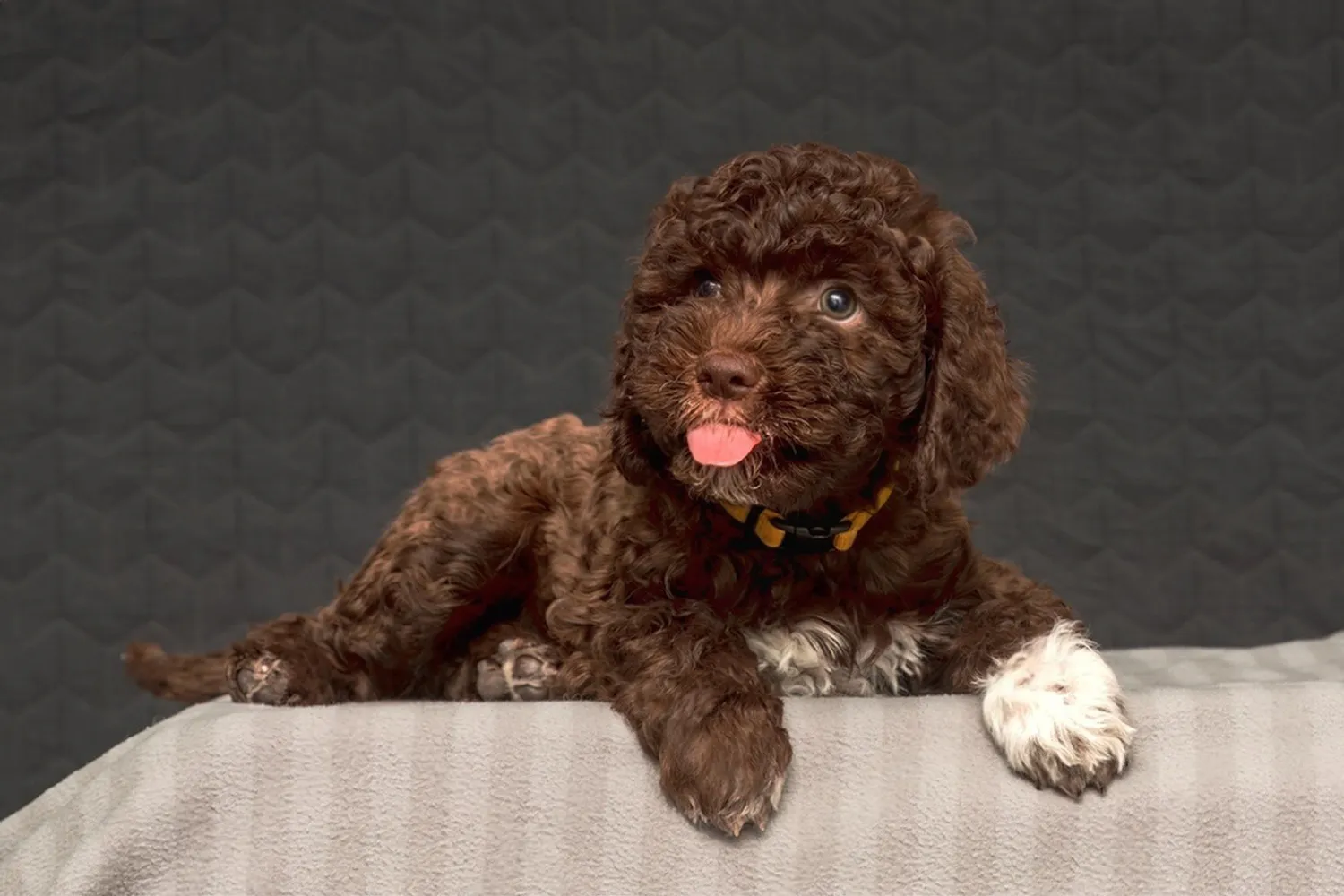
Who Is a Lagotto Romagnolo Best For?
A Lagotto Romagnolo really shines with an active, outdoorsy family who enjoys getting out for walks, hikes, and adventures. They tend to do beautifully with older kids and mature dogs who understand boundaries. As they reach adulthood, many Lagotti get a little impatient with over the top puppy antics and super bouncy toddlers, so it’s important to supervise and keep things calm. I like to teach kids a few simple “dog rules” right away no hugging, no chasing, hands off the food bowl and it makes a world of difference.
They’re happiest when their brain is working as much as their legs. My neighbor’s Lagotto, Olive, will trot through our local park and “collect” lost tennis balls like it’s her job. Give them scent games, puzzle toys, and short training sessions and you’ll see that famous Lagotto focus kick in. If your home gets chaotic (playdates, visiting dogs), set up a quiet safe zone and offer a stuffed Kong or sniff mat. A little structure helps them relax.
While they’re famed truffle hunters, these dogs are just as fun in modern dog sports. Agility, scent work, rally if there’s a course to run or a target to find, they’re in. A friend of mine signed up for a beginner nosework class and her Lagotto found hidden tea bags in the living room like a tiny detective. Whether you live in a house with a yard or an apartment near good parks, plan on daily exercise plus a “sniffari” to let that brilliant nose do its thing. Supervise around young children and excitable pets, and you’ll have a devoted, witty companion who loves having a job.
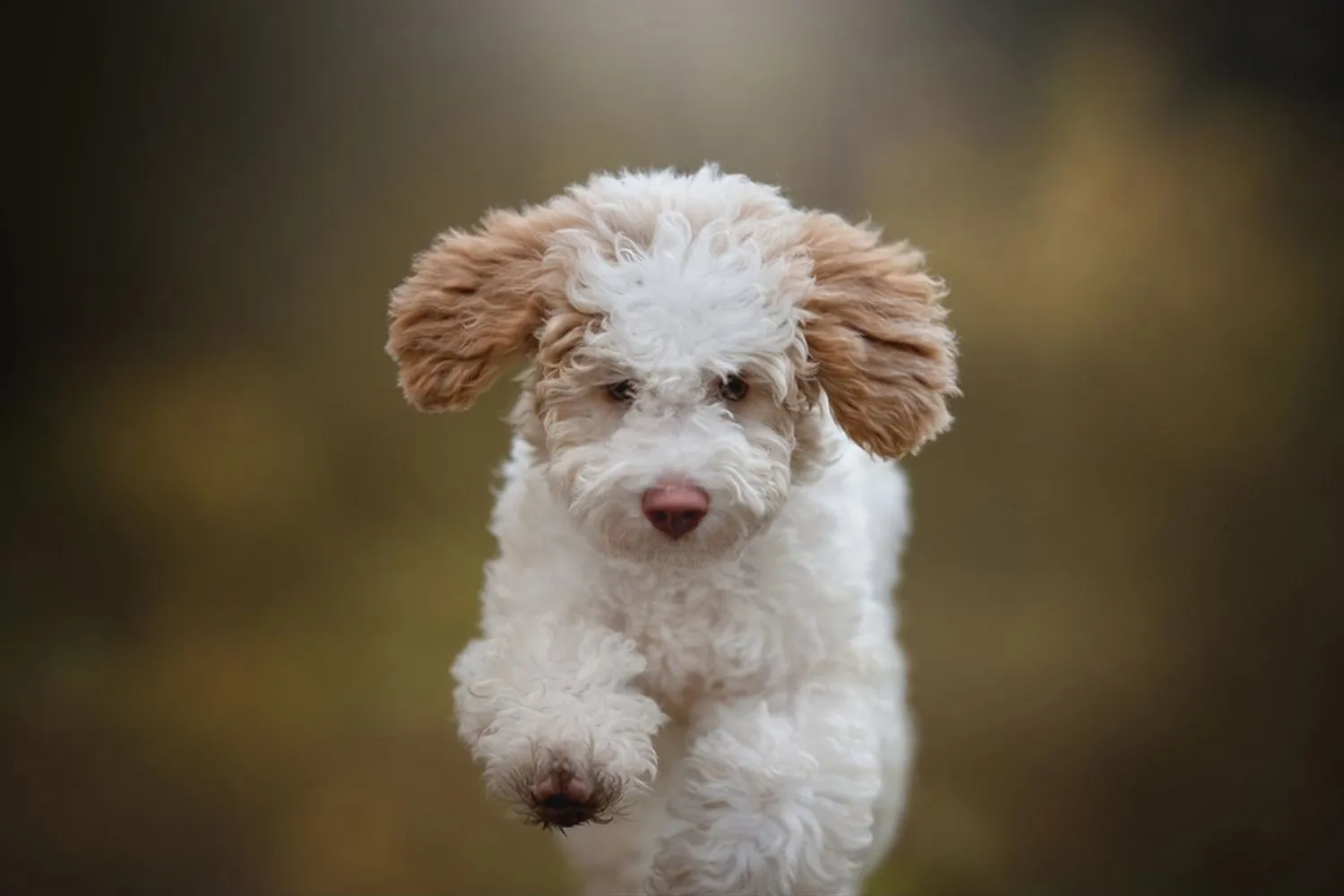
Lagotto Romagnolo Grooming and Shedding
Lagotto Romagnolo pups wear a dense coat of curly, woolly hair (not fur) that feels a bit like cozy lambswool. The outer coat is semi rough, and underneath is a lush, water repellent layer built for chilly swims and muddy adventures. I met a Lagotto named Nico at a lakeside picnic who dove in after every tossed stick, then shook himself into a perfect puffball adorable, but definitely the type of coat that needs a plan.
You don’t have to groom a Lagotto every day, but regular combing is non negotiable if you want to avoid mats. I reach for a wide tooth metal comb and work in sections: behind the ears, armpits, around the collar line, and the base of the tail are the usual trouble spots. Aim for a gentle, thorough comb out a few times a week. The goal is simple: the comb should glide through without snagging. Pro tip I learned the hard way never bathe a matted Lagotto. Water tightens mats. Detangle first, then bathe.
Lagottos are considered low shedding, which is lovely for your floors and furniture. Instead of shedding, their hair grows and tangles, so maintenance shifts from vacuuming to combing and trimming. You might notice a bit of extra fuzz when the puppy coat transitions to the adult coat; that’s normal just bump up your combing sessions during that phase.
Between professional grooms, pay close attention to nails and ears. Keep nails short with regular trims (every 1-2 weeks works for most). For ears, gently check after swims and playtime. Clean with a vet approved ear cleaner and only pluck ear hair if your vet or groomer recommends it; the ear plucking powder helps if you do. One summer at the lake, I got into the habit of a quick towel dry and ear check before the car ride home saved us from a stubborn ear irritation.
Restoring a neglected Lagotto coat can be a marathon. If mats have taken over, it may require a careful, time-consuming comb out or even a clip down to start fresh. I once helped a friend with a rescue Lagotto who’d gone shaggy for months; we worked in short, calm sessions with lots of treats, and it took a week to bring back those springy curls.
For grooming a Lagotto Romagnolo pet or show these tools make life easier:
– a grooming table with an H bar
– neck and belly straps
– nail clippers
– metal combs
– pin brushes
– ear plucking powder
– large professional standard grooming scissors
If you’re trimming at home, keep the coat tidy and natural Lagotti shouldn’t look sculpted or blown straight. I like to air dry or use a low, diffused dryer and scrunch the curls so they spring back. A full groom every 6-8 weeks plus regular combing keeps that rustic, curly look.
Start handling your puppy early: touch paws, peek in ears, lift the tail, and pop them on the table for tiny “practice grooms.” I smear a bit of peanut butter on a lick mat attached to the H bar and work for just a few minutes at a time. Those little sessions add up, and your future self (and your groomer) will thank you.
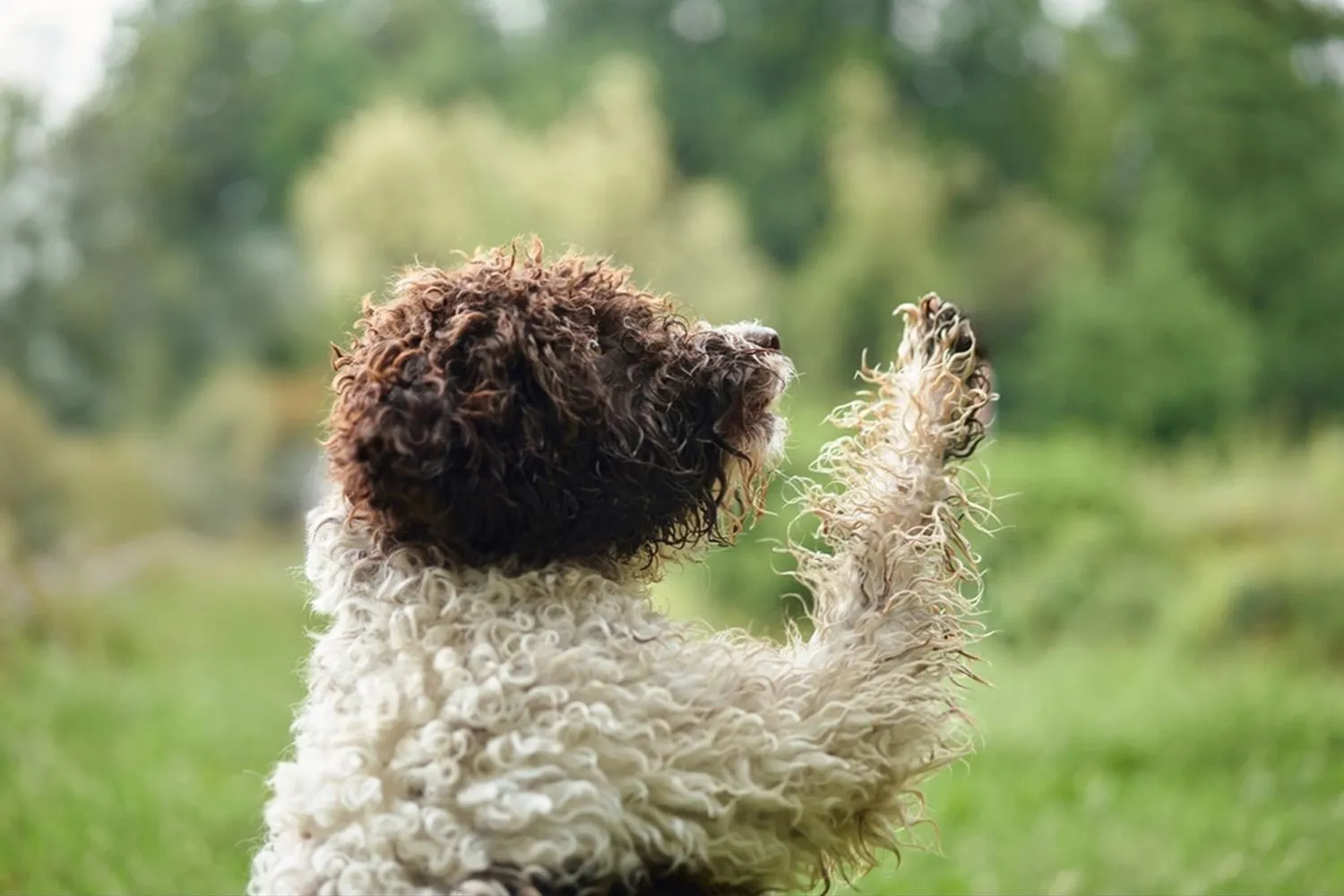
Do Lagotto Romagnolos Bark a Lot?
Short answer: not usually. Lagottos aren’t chronic barkers, but they are thoughtful little watchdogs. Expect a few crisp, purposeful woofs when someone walks up the path or a delivery hits the doorstep. My friend’s Lagotto, Luna, gives two alerts, checks in with her people, and then melts back onto the rug once she sees everything’s fine. They’re tuned in dogs with great noses, so new sounds and scents can flip that “I should tell you about this” switch.
Because they’ll confidently sound the alarm for their family, early socialization is gold. Lots of friendly meet and greets, calm introductions to other pets, and gentle time around small children help them learn what’s normal. I like teaching a “thank you” or “quiet” cue: praise the initial alert, then reward the moment they hush. Doorbell games, short sniffy walks, and puzzle toys also cut down on boredom barks. One time I worked with a Lagotto who hated the recycling truck two weeks of “look at that” with treats, and he went from full chorus to a bored head tilt.
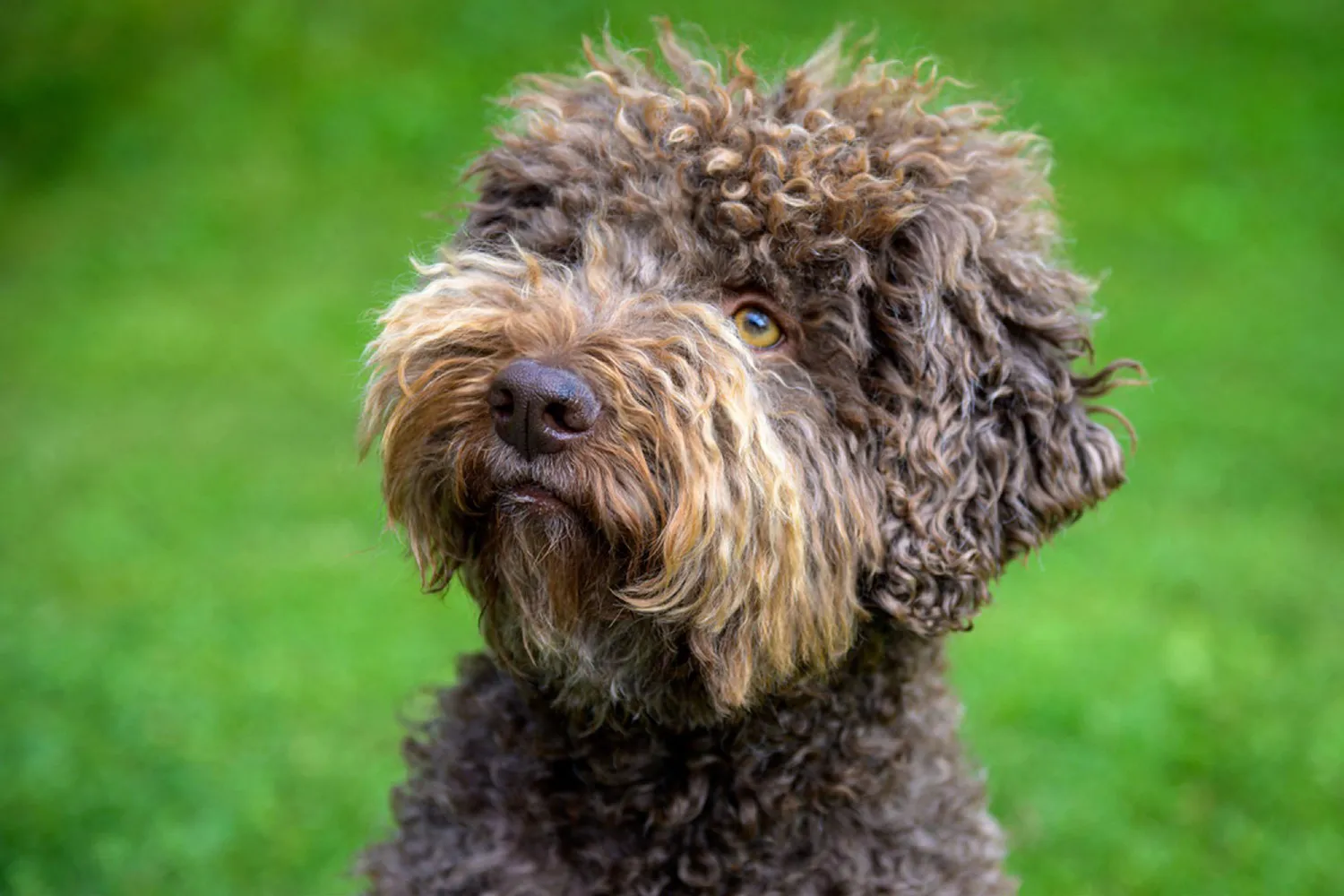
What Is the Average Weight and Height of a Lagotto Romagnolo?
If you’ve ever met a Lagotto Romagnolo (the famous truffle dog), you know they’re compact, sturdy, and a little teddy bearish thanks to those curls. According to the breed standard, males stand about 43 to 48 cm at the withers, and females are a touch smaller at 41 to 46 cm. That’s roughly 16 to 19 inches tall when you convert it. I always remind friends that “at the withers” means the highest point of the shoulder don’t measure to the top of the head unless you want a very flattering, very wrong number.
When it comes to weight, Lagotti aren’t large dogs. They typically fall between 11 and 24 kg, which is about 24 to 53 pounds. Most I’ve met sit somewhere in the middle of that range. My friend’s Lagotto, Pino, hovers around 15 kg and looks just right lean, athletic, and ready to zigzag through a field at a moment’s notice. The curls can make them look bigger than they are, so I like the “rib check” test: you should feel ribs with a light sweep of your hand, but not see them sharply.
A quick bit of practical measuring advice from my own routine: to check height, I have my dog stand square against a wall, balance a hardcover book flat on the withers, and measure from the bottom of the book to the floor. For weight, I do the hop on the scale with your dog trick, then subtract my own number works like a charm when the vet’s closed. Keep a simple growth log if you have a puppy; it’s so satisfying to watch them fill out, and it helps you and your vet spot any sudden changes.
Remember, males often trend toward the taller/heavier end of the ranges and females toward the lighter side, but healthy Lagotti come in a variety of perfectly normal sizes. Aim for fit rather than fluffy, and don’t let those adorable curls hide creeping extra pounds. A balanced diet and plenty of sniffy walks keep this clever, nose driven breed in prime condition.
https://en.wikipedia.org/wiki/Lagotto_Romagnolo
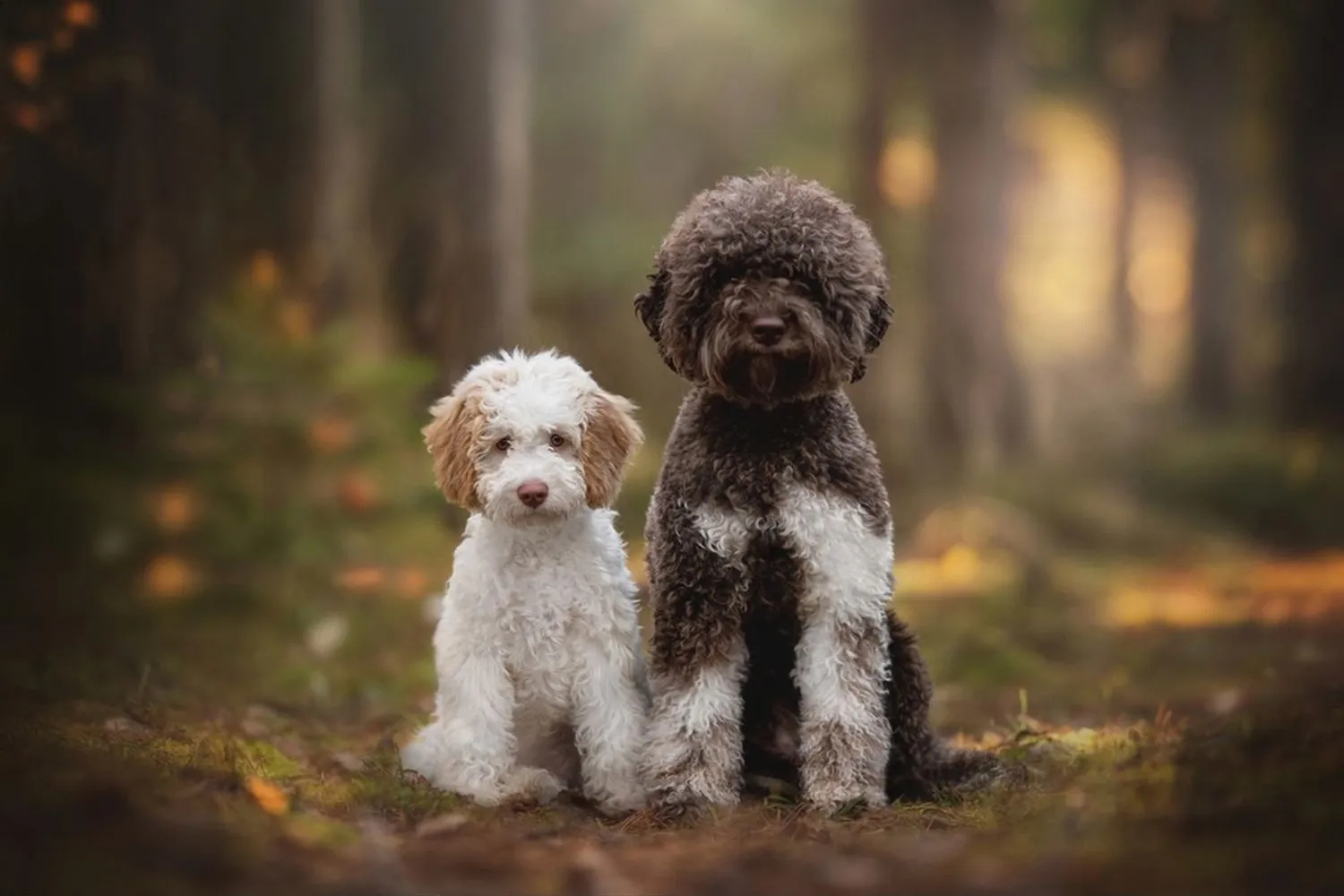
Are Lagotto Romagnolos easy to train?
Absolutely and they make it fun, too. Lagotti are bright, busy little problem solvers, and they learn best when training feels like a game. I like to mix short bursts of play with simple exercises so their clever minds stay engaged. Think: a few sits and downs, a quick game of tug, then a “find it” sniffing round using a couple of treats hidden under cups. That taps into their truffle dog roots and keeps that nose happily working.
You can start as early as seven weeks with a clicker, tiny treats, and a ton of patience. When I brought my Lagotto pup home, our first “lesson” was just marking and rewarding eye contact on a cozy bath mat. Ten treats, two minutes, and done ending while he still wanted more. Keep cues short and clear, be fair and consistent, and you’ll see confidence bloom fast.
These dogs love a challenge, and they’re famous for excelling at agility something the Lagotto Romagnolo Club of Great Britain happily points out. I set up a mini course in the yard with a broomstick jump and a hula hoop; my friend’s Lagotto took to weaving poles like he’d been doing it for years. If agility classes are available near you, they’re a fantastic outlet for that lively brain and springy body.
Don’t forget water work. Swimming is wonderful mental and physical exercise, but introduce it gently. Even breeds known for retrieving need to learn that water is safe and fun. I start at the shoreline with a long line, toss a floating toy just a few inches out, and celebrate tiny steps first wet paws, then a quick wade, and only later a short swim. A canine life vest can boost confidence while they figure it out.
Keep sessions short, end on a win, and sprinkle training into your daily routine. With play, structure, and clear communication, a Lagotto quickly becomes that well adjusted, eager partner you dream about.
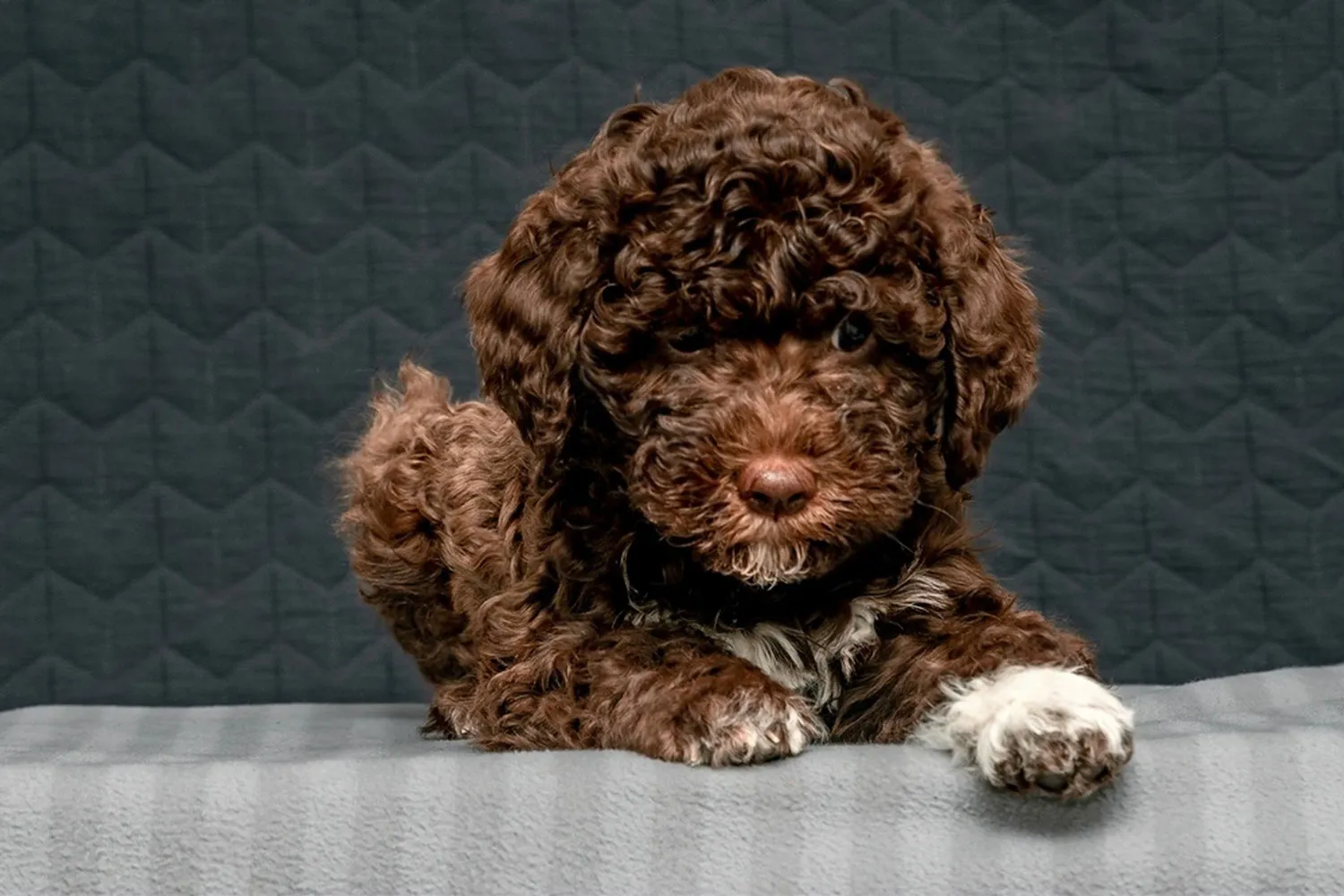
How Do Lagotto Romagnolos Behave? A Look at Their Temperament and Personality
If you bring a Lagotto Romagnolo into your life, expect a shadow with a curly coat. They’re companion dogs to the core and happiest when they’re part of whatever you’re doing laundry, emails, cooking, you name it. The ones I’ve known are cheerful, playful, and wonderfully curious, the sort who tilt their heads at every new sound and turn even a simple walk into a little adventure.
That hunting ancestry shows up in their focus. A Lagotto notices everything: the squirrel two houses down, the delivery truck, the toy you “forgot” under the couch. They make observant watchdogs who will give a clear alert when something’s off. Mine got into the habit of a short, serious “woof” to announce visitors, then settled once I said thanks and invited the person in. Early socialization and a solid “place” cue by the door go a long way toward keeping that alertness polite rather than overbearing.
Where they truly shine is with their nose. The Lagotto was born to search, and scent games are their happy place. Ten minutes of hide and seek with treats or a few cotton balls dabbed with truffle oil tired my friend’s Lagotto out more than a long jog. Try a snuffle mat, scatter feeding in the yard, or hiding toys in cardboard boxes with a cue like “find it.” Fair warning: their digging instinct is real. I set up a “legal dig zone” with sand and buried toys problem solved and dog delighted.
Affectionate and devoted, they can also be a bit territorial, especially around home and family. They’re not aggressive, but they’ll grow protective if you don’t guide them. Invite guests over regularly, reward calm greetings, and teach boundaries early. Keep training positive and varied these dogs are bright and sensitive, and they blossom with mental workouts and kind leadership. Give a Lagotto companionship, a job for that nose, and clear routines, and you’ll have a loyal, spirited buddy who makes every day more interesting.
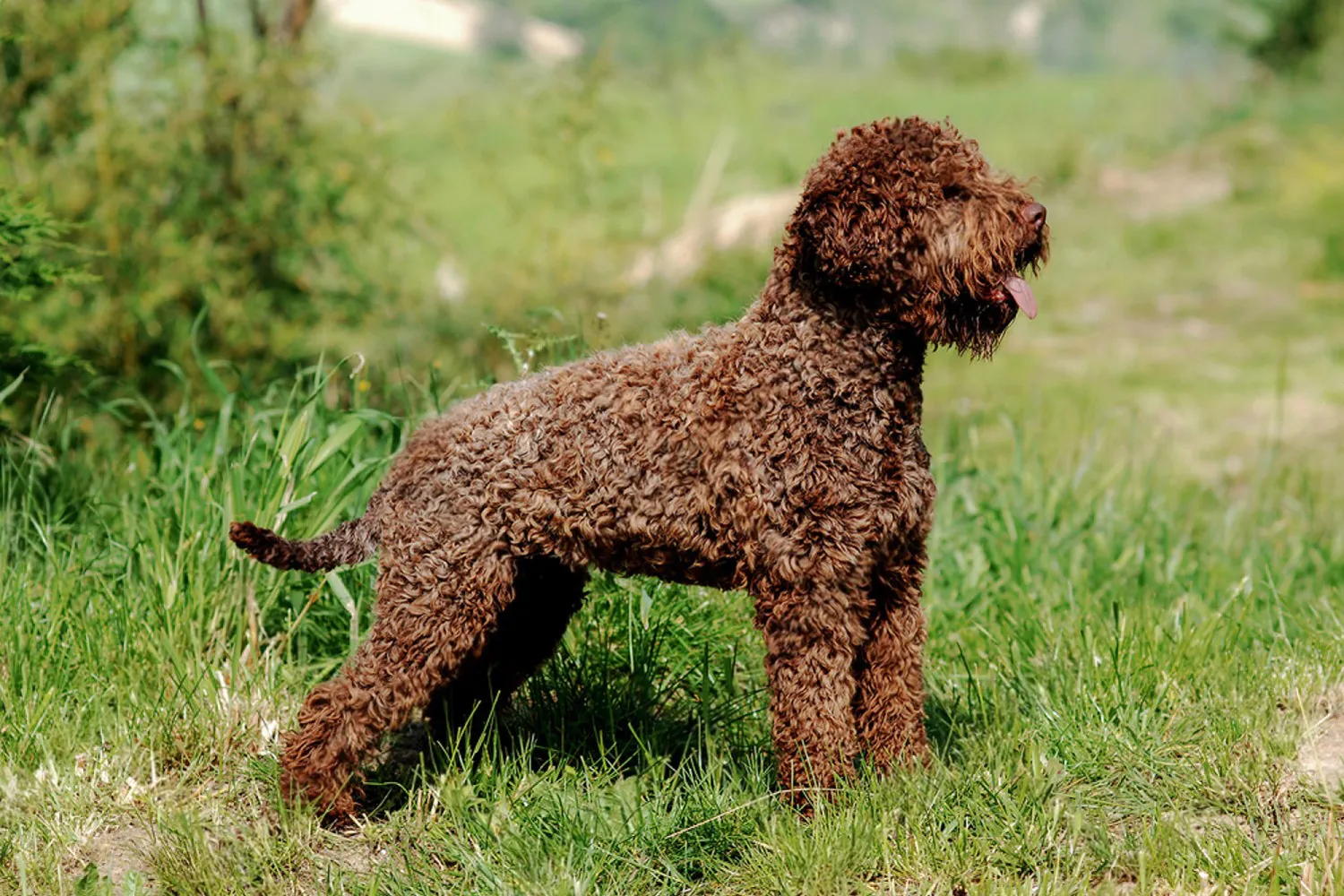
Lagotto Romagnolo Health: What to Watch For
One of the reasons I adore the Lagotto Romagnolo is how generally sturdy this breed is. For a purebred dog, they’re remarkably free of major health problems compared to many other pedigrees. That said, a little prevention goes a long way. Whether your Lagotto comes from a rescue or a reputable breeder, make sure your vet or the breeder screens for two key conditions: Juvenile Epilepsy (JE) and Lysosomal Storage Disease (LSD). Responsible breeders usually have paperwork on genetic testing; I still remember sitting at a kitchen table with a breeder as she walked me through the results line by line. It was reassuring and a good lesson to always ask.
Juvenile Epilepsy can show up in puppies as young as five weeks. The red flags are seizures and ataxia basically wobbly, uncoordinated movement. If you ever see your pup stiffen, drool, or stumble in an unusual way, don’t panic, but call your vet. I keep a “just in case” plan: clear the area, stay calm, and if it’s safe, take a short video for the vet. It’s the kind of preparation you hope you’ll never need, but it helps to be ready.
Lysosomal Storage Disease is rare, but it’s serious, which is why screening matters. It can cause developmental delays, movement disorders, seizures, and, in severe cases, dementia, deafness, and blindness. Good breeders test to avoid producing affected puppies; if you’re adopting, ask the rescue what health history they have, and schedule an early checkup to get a baseline.
Like many medium sized breeds, Lagottos can also experience Canine Hip Dysplasia. Early diagnosis makes a big difference. During puppyhood, regular vet visits are your best ally, because undiagnosed dysplasia can lead to arthritis in older dogs. Around the house, I use rugs on slippery floors and keep jump heavy games to a minimum while joints are still developing. Keeping your Lagotto lean and fit is huge my friend’s Lagotto started doing a cute little “bunny hop” when running, which sent us to the vet; it turned out to be growing pains, but it reminded me how closely weight, exercise, and joint health are connected.
Bottom line: enjoy the breed’s overall hardiness, but be proactive. Ask for genetic test results, keep those puppy checkups on a schedule, and listen to your gut if something seems off. A little vigilance now means many years of muddy walks, couch snuggles, and truffle hunts later.
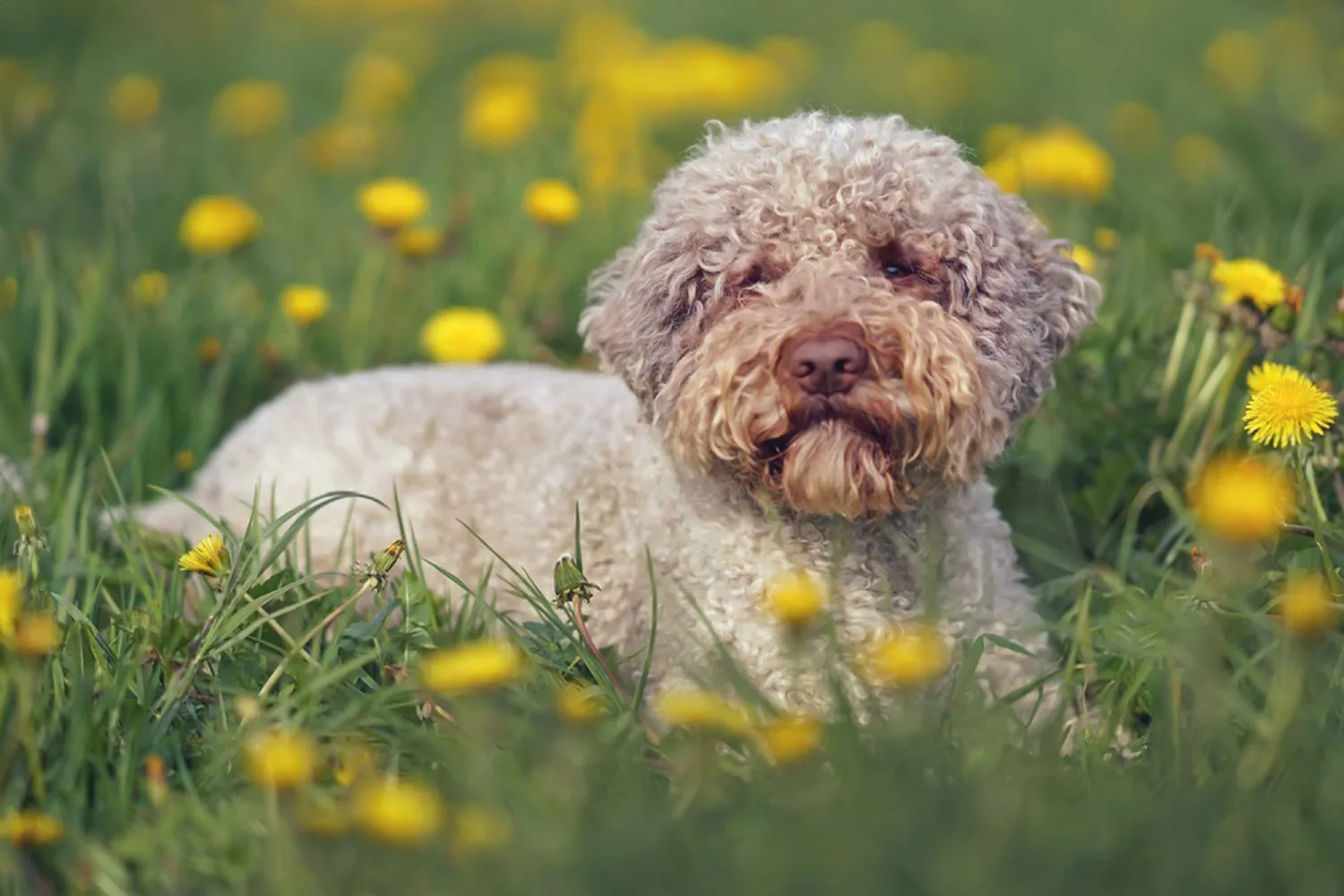
What is the lifespan of a Lagotto Romagnolo?
With good care and a bit of luck, many Lagotto Romagnolos happily pad their way into their mid to late teens around 15 to 17 years is a fair expectation. That’s a lot of birthdays, couch snuggles, and muddy paw memories. I still smile thinking about my neighbor’s Lagotto, Pip, who was 16 and still trotted out for gentle scent games in the yard like it was his job. He did slow down, sure, but he never lost that bright, “What are we doing next?” sparkle.
If you’re hoping to help your Lagotto live a long, comfortable life, the usual pillars really matter: regular vet checkups, a balanced diet (watch that waistline extra weight is tough on joints), and daily exercise that keeps the body moving without pounding the pavement. Because Lagottos are clever truffle hunters at heart, add brain work too snuffle mats, hide and seek with treats, or backyard nose work can keep them sharp and happy well into their senior years. Keep up with grooming to prevent mats in that curly coat and peek at ears and teeth during brush time. And if you’re choosing a puppy, working with a responsible breeder who does health screenings can stack the odds in your favor. Do all that, and you’ve got a great chance at many, many years with your curly sidekick.
Figuring out how much to feed a Lagotto Romagnolo starts with one simple truth: it depends on their age, size, and activity level. This breed isn’t usually fussy, but they are energetic and clever, so their portions should match their lifestyle. I like to start with the feeding guidelines on the food bag as a baseline, then check in with my trusted veterinarian (and a canine nutritionist if you have one) to fine tune. Keep an eye on body condition rather than just the bowl: you should feel ribs under a light layer of padding, see a waist from above, and notice a gentle tummy tuck from the side. Puppies usually do best with three to four small meals a day, while most adults are happy with two. If your Lagotto had a big hike or a busy training day, you might bump things up slightly; if they snoozed the day away, scale back a bit.
Whether you feed dry food or go the raw route, make any changes slowly. I like a 7-10 day transition where I swap in a little more of the new food each day. Turn it into a fun taste testing ritual: scatter a few kibbles for a sniff and seek game, use a lick mat for new toppers, or try a puzzle feeder to let that brilliant Lagotto nose go to work. Watch for signs of allergies or tummy trouble itchy ears or skin, soft stools, gas, or sudden disinterest and pull the offending ingredient right away. These dogs are smart and opinionated; my friend’s Lagotto, Nocciola, will neatly spit out a single pea and then give me a very pointed look, as if to say, “Nice try.”
Consistency is your best friend. Feed on a regular schedule and offer a balanced variety over time rotating proteins or brands can keep things interesting without upsetting the stomach, as long as you transition gradually. Measure portions (a kitchen scale beats a scooping cup), keep fresh water down, and limit treats to about 10% of daily calories so training doesn’t accidentally turn into overfeeding. I keep a quick note on my phone with weight, stool quality, and energy level; if the number on the scale creeps up, I trim meals by 10% and check in with the vet. With a steady routine and nutritious meals, your Lagotto will stay happy, healthy, and ready for the next sniffing adventure.
Lagotto Romagnolo FAQs
How many puppies are in a Lagotto Romagnolo litter?
Most Lagotto Romagnolo litters have four to six puppies. That’s the sweet spot I’ve seen with friends’ dogs too my neighbor’s Lagotto, Olive, had five little curly potatoes who toddled around like synchronized truffle seekers. Litter size can vary a bit depending on the mother’s age and health, so if you’re working with a breeder, it’s always worth asking about the parents and what they typically produce.
How long can a Lagotto Romagnolo be left alone?
Lagotti are sociable, sensitive dogs who really thrive on being near their people, so they shouldn’t be left alone for more than a few hours at a time. When I brought my youngster home, I started crate training on day one, and it was a game changer. With the right introduction, a crate feels like a den a quiet, safe nook away from loud noises and busy kids and it can help prevent separation anxiety and boredom fueled mischief like nonstop barking or chewing the table legs.
A few practical tips that helped me: make departures low key, offer a safe chew or food puzzle in the crate, and keep the crate in a calm spot. I draped a light cover over one side to make it cozy and used soft background noise when I stepped out. Short, positive alone time sessions add up. Give them a good potty break and a little mental exercise before you leave, and you’ll set your Lagotto up for success.
Will a Lagotto Romagnolo get along with a cat?
Usually, yes especially if you socialize them when they’re young. Puppy classes and basic obedience during that formative period make all the difference. My friend has a Lagotto and an elderly cat; we started with scent swaps, then calm, leashed introductions, and added a baby gate so the cat could retreat. It took a week of patience, but now they share sunny windowsills like a couple of retirees on vacation.
If you’re introducing a teen or adult Lagotto to a new cat, expect them to be a bit aloof but generally relaxed. Lagotti aren’t aggressive by nature. Just go slow, supervise early meetings, and give the cat high perches and safe spaces. Many Lagotti also get along nicely with other animals once they know the house rules.
Are Lagotto Romagnolo dogs hypoallergenic?
Lagotti are considered hypoallergenic thanks to their functional double coat of hair, which is closer to human hair than fur. They shed minimally, and many allergy prone families do very well with them. I always suggest meeting a Lagotto in person first and spending time in the same room bring tissues just in case then keep up with regular grooming and brushing to reduce dander. For a lot of people, that combination makes living with this cheerful, curly companion wonderfully doable.
Disclaimer:
This article is for informational purposes only and doesn’t replace professional veterinary or training advice. Always consult a certified vet or dog trainer for guidance specific to your pup.
